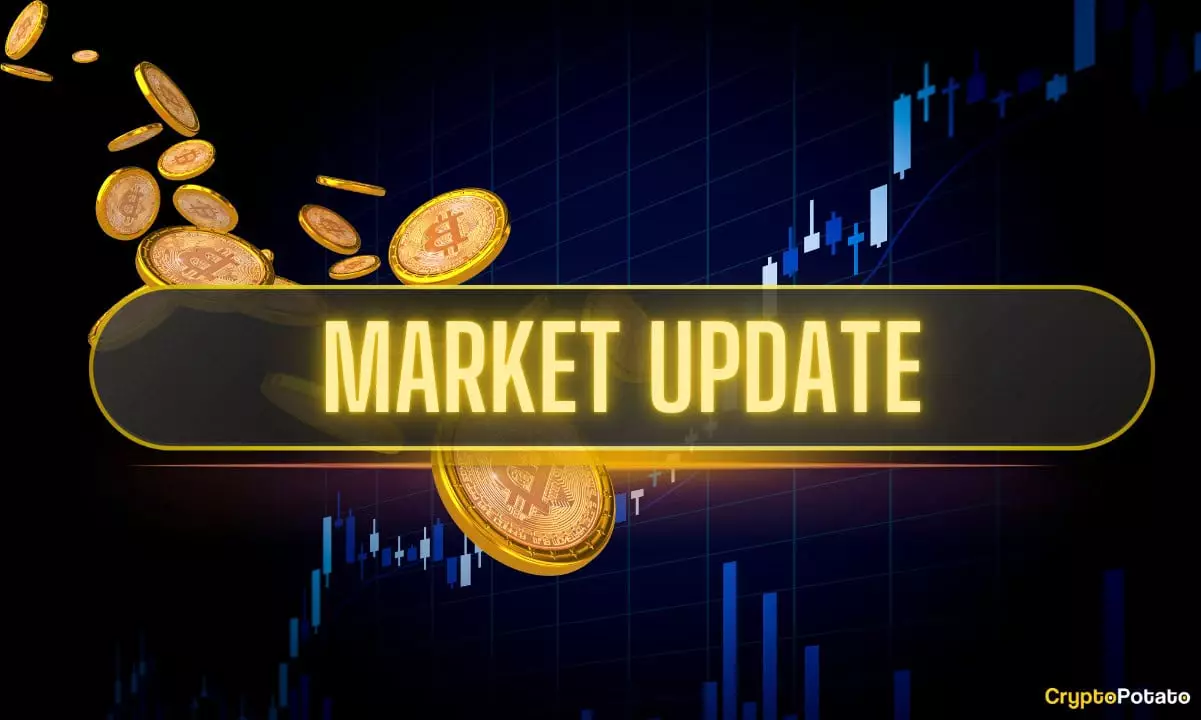The intricate dance between politics and markets has never been more apparent than in the recent clashes between President Trump’s trade policies and the highly volatile cryptocurrency market. The Trade War, which Trump initiated with a sweeping announcement of tariffs on all countries, has been a catalyst for significant disruptions, particularly in Bitcoin’s performance. When tariffs were declared at a minimum of 10%, with larger countries facing even heftier taxes, Bitcoin’s trajectory became erratic, reflecting the uncertainty that permeated the market.
For many investors, Trump’s mercurial style of governance raises alarm bells. The initial impact was observable as Bitcoin swung wildly from levels above $82,000 to lows nearing $74,000 within a matter of days. Such volatility feels more like a reflection of President Trump’s unpredictable nature than a well-reasoned market response. Understanding this intertwining relationship is essential for anyone dabbling in cryptocurrencies as they navigate through the political minefield that influences price.
The Underbelly of Bitcoin’s Fluctuations
This week ushered in a wave of downward pressure on Bitcoin as Trump’s threats to elevate tariffs against China to 125% loomed overhead. The relationship between global politics and cryptocurrency values has become painfully evident. It’s staggering how an impulsive presidential decree can lead to a rollercoaster ride for an asset like Bitcoin, which prides itself on being decentralized and immune to governmental whims. Yet, here we are, seeing Bitcoin’s value swing dramatically based on the utterances from the Oval Office.
The momentary respite when tariffs against other nations saw a pause, and Bitcoin registered a surging bounce from under $77,000 to above $83,000 speaks volumes. However, it’s this erratic behavior that reveals deeply rooted vulnerabilities in the crypto ecosystem—making participants question their investments whenever the political landscape shifts. It showcases how external forces, driven by personal political agendas, can compromise the integrity of what should ideally be an autonomous financial realm.
Cascading Effects on Altcoins
As Bitcoin trembled under the weight of Trump’s declarations, altcoins weren’t spared from the tremor. Ethereum’s plummet to $1,400 was particularly jarring, as it essentially erased years of growth. The chain reaction extending beyond Bitcoin and Ethereum reveals how interconnected the cryptocurrency market is; when the king falls, the rest take a hit. For cryptocurrencies like Ripple (XRP), whose ongoing legal tussle with the SEC continues to create ripples of uncertainty, the situation is exacerbated further.
While some cryptocurrencies show signs of recovery, the question lingers: what is the path forward for altcoins in a world where governmental policy shifts can have swift repercussions on valuations? For those holding onto Ethereum and XRP, it is daunting—especially in the face of Bitcoin’s unpredictable race against the backdrop of Trump’s trade war. Many enthusiasts are left pondering whether there is a fundamental value underpinning these cryptocurrencies, or if they are merely pawns in a much larger game orchestrated by political maneuvers.
The Unsettling Landscape of Market Sentiment
At the crux of this volatility, one must consider market sentiment. The recent data from CryptoQuant indicating the largest inflow of Bitcoin since 2022 into accumulation wallets is intriguing. It prompts discussions about whether investors are seeing opportunity in the chaos or simply reacting to panic. The presence of long-term holders accumulating during such volatility could indicate a robust belief in Bitcoin’s future despite short-term turmoil.
Conversely, there remains a cohort of skeptics who question whether these bullish sentiments will hold in light of ongoing political aggressions. Amid all the sentiment and speculation, it appears that the cryptocurrency market reflects not just economic factors but also the fundamental unpredictability of political strategy. It all leads to a complex battleground where investors must remain vigilant and adaptive to the whims of both cryptocurrency trends and global politics.
The Road Ahead: Speculation and Growth Potential
Looking forward, analysts like Charles Hoskinson predict bullish outcomes, with expectations of Bitcoin reaching $250,000 over the next couple of years. But with such grand proclamations come equal layers of skepticism, especially when tethered to a political narrative laden with uncertainty. The interplay between governmental decisions impacting the crypto landscape poses a unique dilemma for investors, urging them to weigh personal beliefs against tumultuous market realities.
Amidst the fluctuating predictions regarding Bitcoin’s trajectory and the anticipated outcomes of ongoing legal battles like those involving Ripple, it is irrefutably clear that politics and crypto markets are linked in ways that can no longer be ignored. Utilizing informed speculation while remaining aware of these intersecting dynamics may create pathways for potential growth, even as investors grapple with the unpredictable currents of Trump’s Trade War.


Leave a Reply